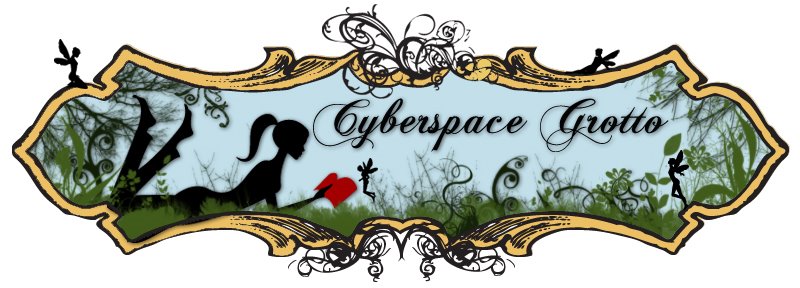The Kooks
 I was reading at the library today - what a weird thing to do- and I came upon this section of "The Secrets of the Sistine" (book I am reading) and I got so excited, I was showing everyone at work what I had learned. I'm sure it was annoying.
I was reading at the library today - what a weird thing to do- and I came upon this section of "The Secrets of the Sistine" (book I am reading) and I got so excited, I was showing everyone at work what I had learned. I'm sure it was annoying. If you like mystery, read no further. It will ruin everything for you. However, if you are one of those people who likes, nay, who has to get to the bottom of things, this may interest.
Not to bog my dear Readers down (oh silent Readers, make yourselves known so I know appropriate content to post) with scholarly text, but this lengthy perusal is worth the effort. Sit back, relax, and... open your eyes.
"...Here we see Adam, the first human being, freshly formed from the dust of the earth, looking languid and limp because he still lacks the vital ruach HaShem, the divine life force. He is not only Adam here, he is Adam Kadmon, the primordial human, the prototype for all human life and the microcosmic model for the universe.
We also see God here, not so much as the Almighty, but in his role of Creator, the One who in creating Adam is creating all of us. Michelangelo's rendition of God in this scene has caused much debate and questioning down through the ages: Who is the young woman under God's left arm? Who is the infant under his left hand? Why does God require so many angels around him, even, seemingly, to hold him up in the air? Why did the artist make this image so busy, with so many extra figures around God, and then add a huge purple cape and a blue-green scrap of cloth hanging down like the tail of a kite?
There are two prevailing opinions on the identity of the mysterious woman. One claims that she must be Eve, or the soul of Eve, waiting for her true soul mate, Adam. The other interpretation is that she is the Neoplatonic concept of Sofia, the Greek goddess and symbol of Wisdom. It is this second view that finds a measure of Kabbalistic support. In the daily prayers of traditional Jews, there is a blessing that offers thanksgiving for our life and for the genius of our bodily functions. The prayer expresses gratitude to God Asher yatzar et Ha-Adam b'Chockmah, "who formed humanity with Wisdom." However, instead of using the more comon Hebrew word anashim (men, humanity, people), the prayer reads et Ha-Adam, literally "the Adam," the one primordial human. This phrasing powerfully echoes the Kabbalistic insight that man was created through the s'firah of Chochman, Wisdom, known in Greek as Sofia-the very idea that Michelangelo may also be expressing.
The infant under God's left hand is most likely the soul of Adam, about to be transmitted into Adam. Notice that the infant's body position is imitating that of Adam. It is about to be infused into Adam through Adam's left hand. According to tradition, the left hand is the one through which we receive blessings and benedictions, since its blood vessels lead directly to the heart. Even today, countless people around the world wear the red string of the matriarch Rachel's blessing- on their left wrist. Michelangelo knew that his talents, too, were a blessing received from God. Is it only a coincidence that the artist, who depicted Adam receiving his soul from the Creator through his left hand, was also himself left-handed?
The other questions- about why God's image is so complicated in this panel, with so many seemingly superfluous figures, a cape, and a hanging cloth- were solved by chance in the year 1975. A Jewish surgeon from Indiana, Dr. Frank Mershberger, entered the Sistine, looked up at the great fresco, and was suddenly struck not only by a sense of awe, by also by a sense of... strange familiarity. What the American surgeon noticed in the Creation panel was the distinctive shape of the cape and the dangling scrap of cloth. He mentally blocked out the colors and the mass of adjacent figures. And then he found himself picturing the diagrams he had studied in his Anatomy 101 textbook back in medical school. The cerebrum, the cerebellum, the occipital lobe, the cortex, the brain stem...of course. They were all there. What Michelangelo had hidden in the painting was a perfect cross-section of the human brain. But- why?
Again, he was showing to others "in the know" what he had learned surreptitiously through illegal dissections. The only people who might have recognized the hidden internal organs in the ceiling would have been other seekers of knowledge who had pursued the same forbidden activities. Those who knew the secret kept silent, and so for many generations the secret was lost or forgotten. It is a testament to Michelangelo's anatomical expertise- and his subtle way of disguising his messages- that it took a professional surgeon to rediscover it in the twentieth century.
Michelangelo concealed this forbidden evidence of anatomical studies to convey the concept of creation rooted in wisdom; the "brain" of God, so to speak, is the source of humankind's appearance on earth. It is yet another illustration of an idea stressed in the Kabbalah- the brain is the organ mystically linked to the s'firah of Chochman/Wisdom. Incredibly, Michelangelo was aware of an even deeper truth, noted long ago in Kabbalistic thought: it is not the entire brain that is linked to Chockman/Wisdom but only its right hemisphere, exactly the part that Michelangelo painted in this panel. The artist found a way to echo visually the ancient Jewish prayer proclaiming that God created Adam with Chochmah, the right side of the divine brain.
Some experts think that the extra interlocking figures surrounding God are the major brain centers and the ganglia (intersections fo the "highway" of the nervous system). However, there is also a far more fascinating mystical explanation. According to the Talmud, Midrash, and Kabbalah, the drop of semen that impregnates the womb of the woman does not originate in the male reproductive system but comes from within the man's brain instead. According to this interpretation, all those figures surrounding the Creator are us, the future descendants of Adam and Eve, waiting to be conceived. That makes all of us direct descendants of God, awaiting birth from his brain- a powerful universalistic concept."
Blech, Benjamin and Doliner, Roy. The Sistine Secrets: Michelangelo's Forbidden Messages in the Heart of the Vatican. HarperCollins, 2008.
There is a land of the living and a land of the dead and the bridge is love, the only survival, the only meaning.
Thorton Wilder, The Bridge of San Luis Rey


















1 comment:
I totally saw the brain right before I read the paragraph that explained that! I exclaimed outloud,"Oh! It's a brain!"
Also, I JUST finished reading the creation account in Genesis last night.
Incidence! :)
Post a Comment